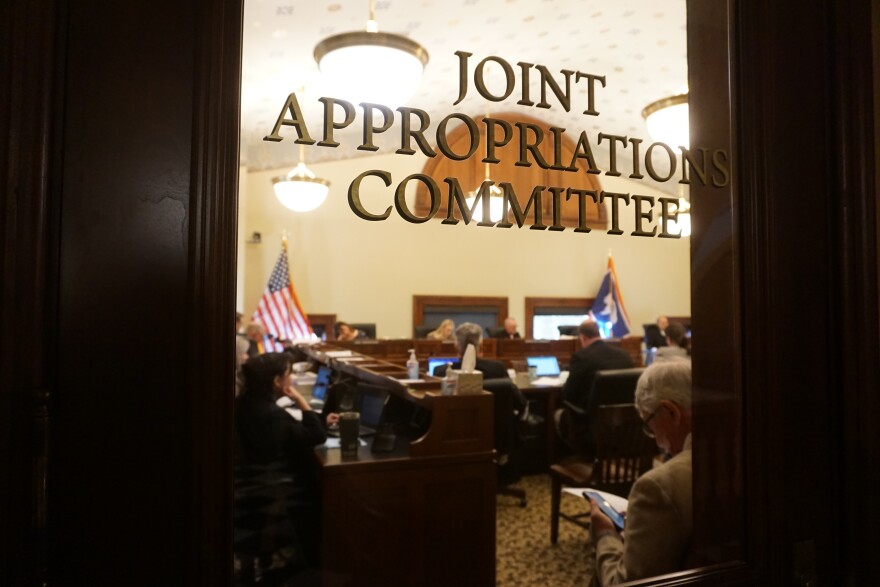On Tuesday, Wyoming state lawmakers held an Appropriations Committee meeting to discuss wildfires in the state. The hearing took place as major fires burned in the northwestern part of the state, which led Governor Mark Gordon to issue an Executive Order declaring an emergency and freeing up federal firefighting resources.
State Forester Kelly Norris gave lawmakers an overview of the 2025 wildfire season, detailing both the number of fires and the state’s response efforts.
“Wyoming has had 755 wildfires that have burned approximately 150,000 acres. In comparison to last year at this time, Wyoming is tracking way ahead in the number of fires, probably over 120,” Norris said.“We have been more successful in keeping fires smaller this year; however, the threat of fires has gone up in recent years. Six of the largest fires in Wyoming history have occurred over the past two years, with total acreage burned now exceeding one million acres.”
Norris said state and private lands have seen more acres burned than federal lands so far in 2025. This year, the state legislature gave more funding for firefighting aircraft. Noris testified that they have significantly improved initial efforts to combat fires.
But the fires that do grow out of control are getting costly. When a fire exceeds the capacity of local suppression resources and state help is requested, it comes through the Emergency Fire Suppression Account (EFSA).
“ Same date last year, we are tracking ahead in the number of EFSA fires, [and] ahead of the acres burned in these EFSA fires by over 60,000,” Norris said.
Lawmakers also got a look into why wildfires are increasing.
“One thing that's really changed for fire control in the state over the last 20, 30 years is cheatgrass in our rangelands,” said Nature Conservancy Sagebrush Program Director Anika Mahoney. “Cheatgrass can be like gasoline on the landscape.”
According to Mahoney, the plant has already invaded an estimated 20 to 25% of Wyoming’s land, and roughly 78% of the state remains at risk.
Sublette County Fire Warden Shad Cooper told the committee that for every dollar spent on mitigation, $6 less is spent on suppression.
“ I am an advocate for that approach of trying to prevent fires and then trying to keep them small when they do happen,” Cooper said. “And I think that our money would be well spent in mitigating the risk before the fires happen.”
Another major issue discussed during the hearing was volunteer availability. Cooper shared an example of how, during a recent fire, most of the volunteers turned out for the initial incident on a Friday, but when the fire carried into Saturday, no volunteers were able to return.
“I couldn’t get anybody that was available the next day to help [with] what’s called mop up,” he said, adding that he ultimately had to hire a Forest Service engine to cover the fire.
Other topics discussed were making the firefighting budget more reliable and improving retention and career pathways for state firefighters. The Joint Appropriations Committee meets again on Oct. 30.








